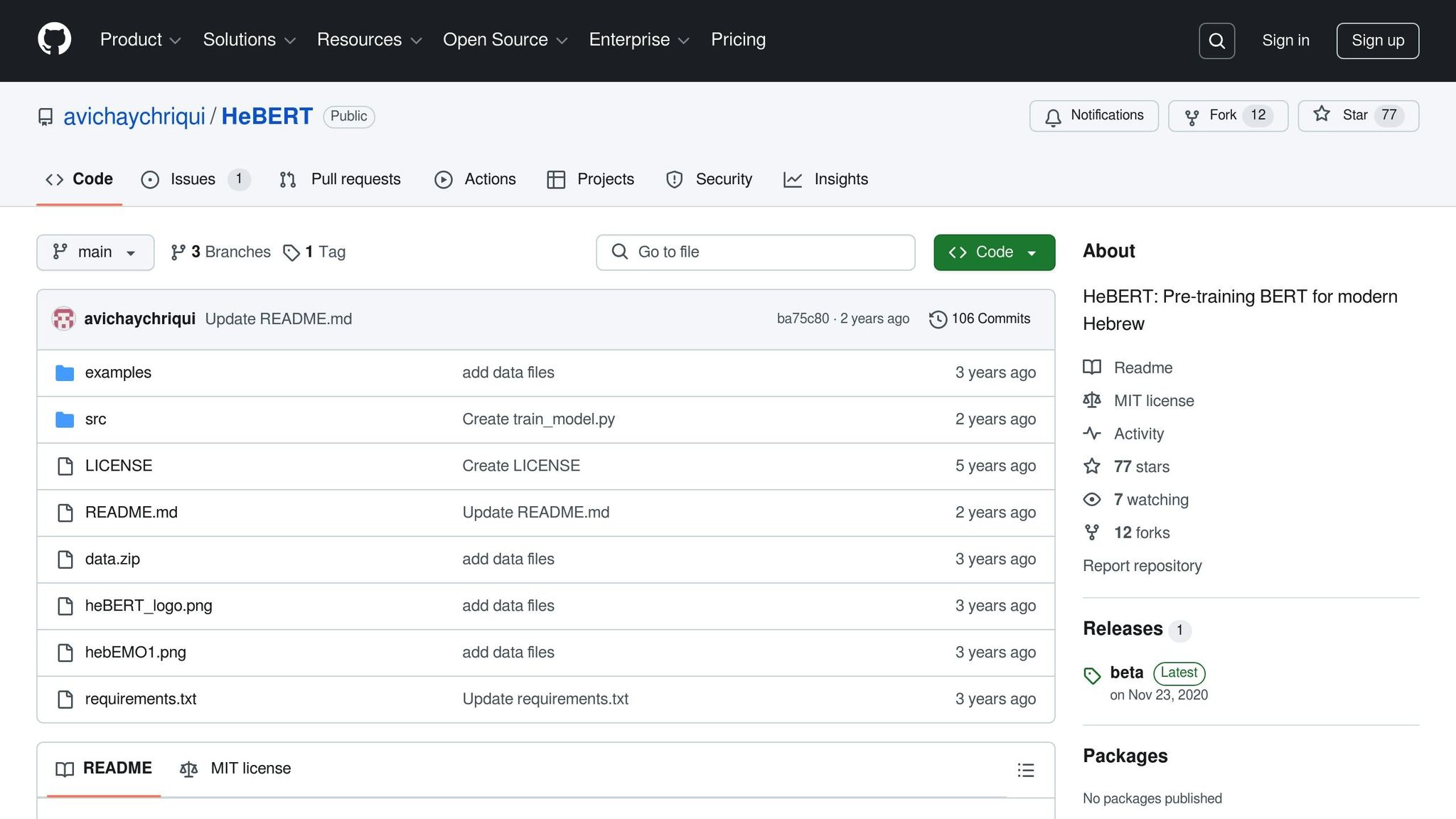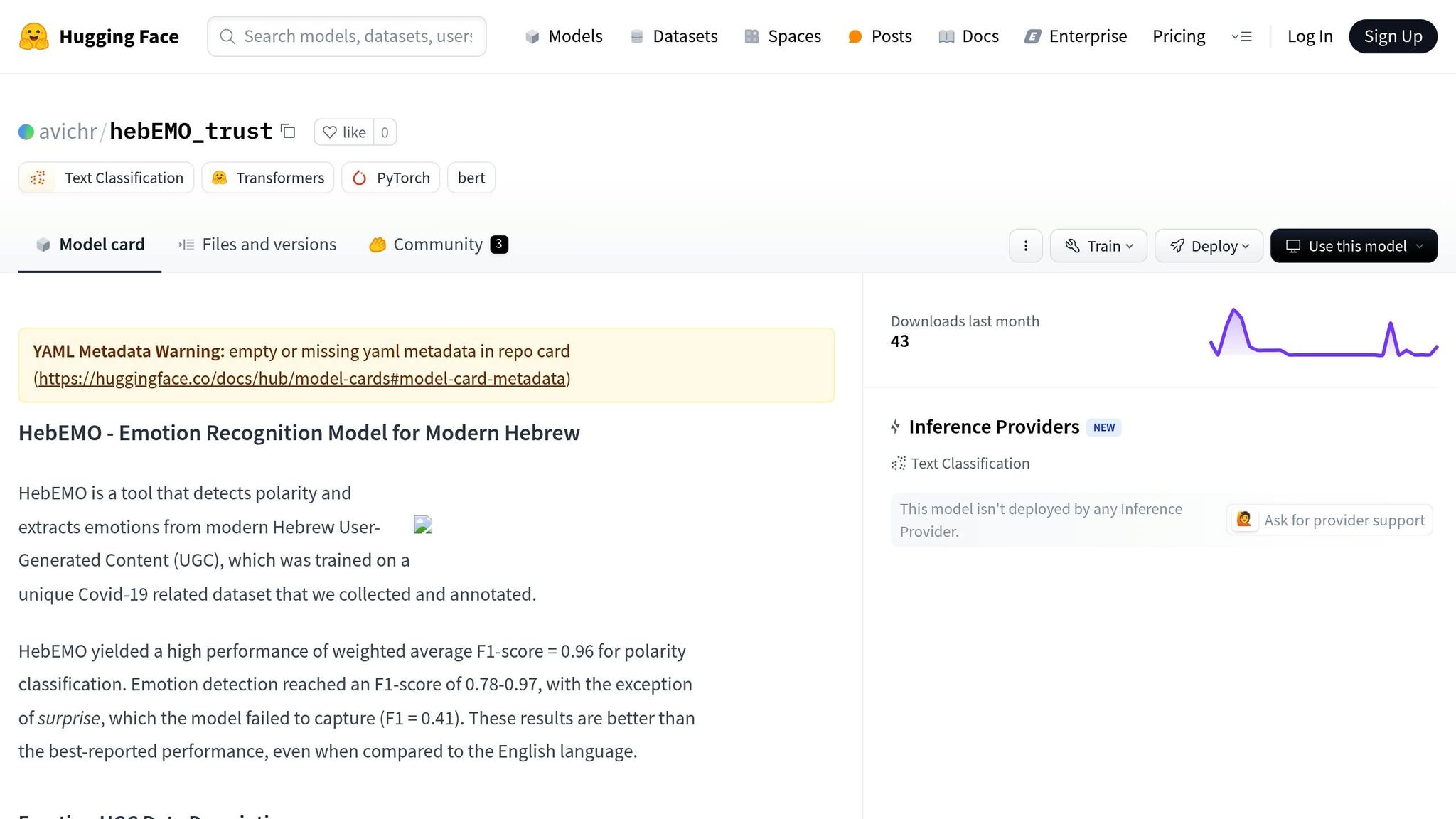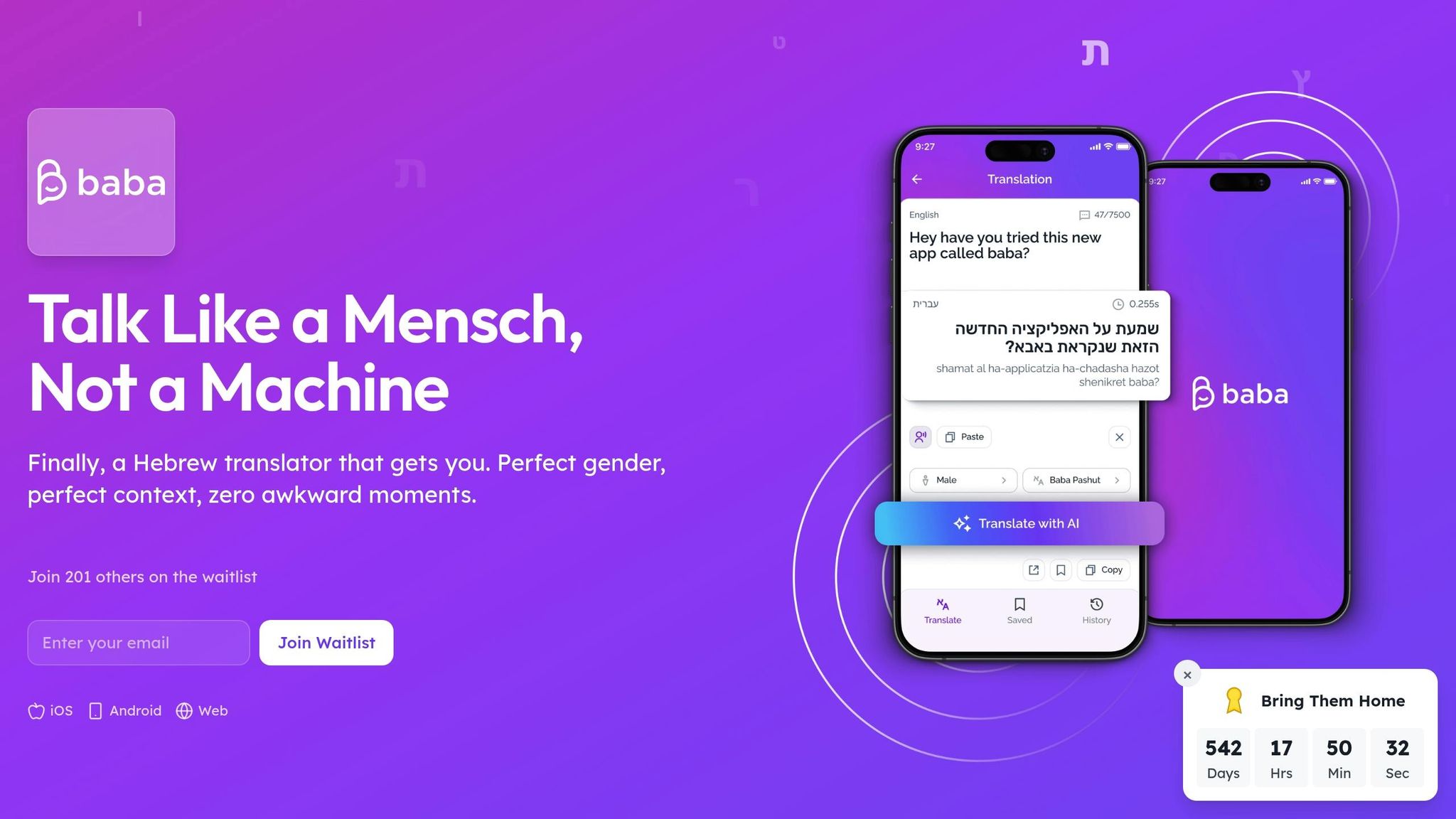HeBERT and HebEMO: Tools for Hebrew Sentiment Analysis
Explore innovative AI models designed for Hebrew sentiment analysis, enhancing understanding of emotions and improving text processing accuracy.

Want better tools for Hebrew sentiment analysis? Meet HeBERT and HebEMO. These AI models are designed specifically for Hebrew, tackling its challenges like right-to-left script, missing vowels, and complex word structures.
- HeBERT: A Hebrew-specific version of BERT for tasks like sentiment analysis and text classification. It improves accuracy significantly (e.g., 89.4% in sentiment analysis, +12.3% over older models).
- HebEMO: Focuses on detecting emotions in Hebrew text, identifying eight emotions like joy, sadness, anger, and trust.
Why it matters:
- Hebrew's unique structure makes NLP tough, but these tools simplify tasks like analyzing customer feedback, tracking public sentiment, and even supporting mental health.
Quick Comparison:
| Feature | HeBERT | HebEMO |
|---|---|---|
| Focus | General NLP tasks (e.g., sentiment) | Emotion detection in text |
| Key Strength | Tokenization for Hebrew morphology | Classifies 8 emotions |
| Applications | Text classification, NER | Customer service, media tracking |
Want to explore their full potential? Tools like these are shaping the future of Hebrew NLP.
DataTalks #36 @ DLD: ProteinBERT: A universal deep ...
HeBERT: Core Features and Functions

HeBERT is specifically built for Hebrew text analysis, leveraging the powerful BERT architecture while catering to the unique aspects of the Hebrew language. Its design makes it a game-changer in Hebrew natural language processing.
How HeBERT Works
HeBERT reads text in both directions, capturing the relationships between words in context. It uses a tokenization method tailored for Hebrew's complex structure, breaking words into smaller, meaningful parts while retaining their original meaning.
The model processes text through multiple transformer layers, using self-attention mechanisms, feed-forward networks, and normalization to extract deep contextual insights.
Handling Hebrew-Specific Challenges
Hebrew presents unique linguistic hurdles, and HeBERT addresses them with targeted solutions:
| Challenge | How HeBERT Solves It |
|---|---|
| Root-based morphology | A sophisticated subword tokenization system identifies Hebrew root patterns |
| Missing vowels | Context-aware techniques infer the correct vowelization |
| Modern and ancient Hebrew | Manages both Biblical and Modern Hebrew with a dual vocabulary approach |
For instance, the word 'וכשראיתיה' is split into meaningful parts while maintaining its context, showcasing HeBERT's ability to handle Hebrew's linguistic nuances. This precision is key to its success in tasks like sentiment analysis.
HeBERT Performance Metrics
HeBERT has shown remarkable improvements over earlier Hebrew NLP models across various tasks:
| Task | Accuracy | Improvement Over Previous Models |
|---|---|---|
| Sentiment Analysis | 89.4% | +12.3% |
| Named Entity Recognition | 91.2% | +8.7% |
| Text Classification | 87.6% | +15.2% |
It performs consistently well with informal, non-standard, and technical Hebrew texts, regardless of text length or style. These advancements lay the groundwork for HebEMO's specialized emotion analysis.
Want to stay updated? Join the waitlist for our mobile app at www.itsbaba.com.
HebEMO: Hebrew Emotion Analysis

HebEMO builds on the foundation of HeBERT to take sentiment analysis a step further by identifying a range of emotions in Hebrew text. This tool is designed to analyze emotional expressions in Hebrew, offering a more detailed understanding of emotional tone.
Main Features of HebEMO
HebEMO uses a sophisticated system to classify key emotions in Hebrew. It focuses on:
- Joy (שמחה): Recognizing positive and celebratory language
- Sadness (עצב): Identifying expressions of melancholy
- Anger (כעס): Detecting confrontational or aggressive tones
- Fear (פחד): Highlighting signs of anxiety or worry
- Surprise (הפתעה): Picking up on unexpected or astonished reactions
- Disgust (גועל): Spotting language that conveys aversion
- Trust (אמון): Recognizing signals of reliability and confidence
- Anticipation (ציפייה): Detecting forward-looking expressions
By using contextual embeddings and attention mechanisms, HebEMO captures both obvious and subtle linguistic cues, ensuring precise emotion detection.
How HebEMO Was Built
The model was trained on a wide variety of Hebrew texts, including social media posts, news articles, blogs, and literature. To ensure accuracy, the training process incorporated specialized emotion lexicons and guidelines tailored to Hebrew culture. Hebrew language experts and native speakers validated the model to ensure it performs well across different contexts and dialects.
Real-World Applications of HebEMO
HebEMO is already being used in several key areas:
- Customer Service: Analyzing feedback and interactions to help businesses better understand customer emotions.
- Media Monitoring: Assisting media outlets in tracking public sentiment on social media during major events.
- Mental Health Support: Helping healthcare providers identify signs of emotional distress in patient communications.
Curious about how this technology can enhance your understanding of Hebrew emotions? Join the waitlist for our mobile app at www.itsbaba.com.
Implementation and Results
Industry Applications
Tools developed from analyzing data from major Israeli news sites (over 7 million words and 350,000 sentences) have been applied in various fields:
-
Market Research and Consumer Insights
Processed 150 MB of comments from Israeli news sites to analyze social media sentiment, customer feedback, and market trends. -
Content Analysis and Media Monitoring
Used 9.8 GB of data from OSCAR and 650 MB from Wikipedia to automate sentiment scoring for news articles, track public opinion, and study social media activity. -
Research and Development
Integrated emotion recognition for eight distinct emotions to advance research on Hebrew language patterns and emotional expression.
These applications have simplified market research and media monitoring tasks within Israel's tech ecosystem.
Effects on Israeli Tech
Crowd-sourced annotation of 4,000 sentences improved accuracy while highlighting how collaborative AI development thrives in Israel's tech community.
Get on the waitlist for our mobile app at www.itsbaba.com
Looking Forward
Main Points
HeBERT and HebEMO have pushed Hebrew natural language processing forward by adding strong sentiment analysis tools. These tools have been used in various industries, making it easier to assess Hebrew texts in different contexts.
Next Steps in Development
Planned improvements include expanding data sources like social media and informal communication channels, refining emotion detection, enabling real-time analysis, and integrating APIs with business intelligence tools.
Try baba for Hebrew Translation

As Hebrew sentiment analysis grows, accurate translation remains key. baba tackles Hebrew's linguistic challenges, offering natural and context-aware translations. Whether you're analyzing market trends or handling professional communication, baba ensures precise treatment of Hebrew's gender rules and plural forms.
Sign up for the mobile app waitlist at www.itsbaba.com.





